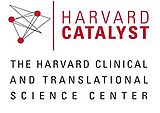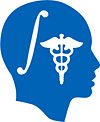Difference between revisions of "Collaboration:Harvard CTSC"
| Line 99: | Line 99: | ||
Tuesday (9:00- 10:00 AM), call: 1-866-890-3820 | Tuesday (9:00- 10:00 AM), call: 1-866-890-3820 | ||
| − | *[[CTSC:TTIC.122209| December 22, 2009]] | + | *[[CTSC:TTIC.122209| December 22, 2009]] meeting canceled |
| − | *[[CTSC:TTIC.122909| December 29, 2009]] | + | *[[CTSC:TTIC.122909| December 29, 2009]] meeting canceled |
=Progress Report Y2= | =Progress Report Y2= | ||
Revision as of 18:07, 21 December 2009
Home < Collaboration:Harvard CTSCBack to NA-MIC External Collaborations
Harvard Catalyst | The Harvard Clinical and Translational Science Center, Imaging Consortium Workspace
Mission Statement
- Provide expert consultation and guidance to the CTSC participants in the use of imaging as part of clinical translational research.
- Educate and advise about available imaging and image processing capabilities in the Harvard environment.
Key Personnel and Resources
| Sites | Imaging Consortium Role | Medical Image Acquisition, Analysis and Visualization |

|
Bruce Rosen, Director Randy Gollub, Co-Director Gordon J. Harris, Consultant William Hanlon, Consultant |
MGH Imaging Resources |
| Robert Lenkinski, Consultant Neil Rofsky, Consultant |
BIDMC Imaging Resources | |
| Clare Tempany, Consultant Ron Kikinis, Consultant Charles Guttmann, Consultant Todd Perlstein, Consultant Gordon Williams, PI for CTSC Translational Technologies |
BWH Imaging Resources | |
| Stephan Voss, Consultant Simon Warfield, Consultant |
CHB Imaging Resources | |

|
Annick D. Van den Abbeele,Consultant Jeffrey Yap, Consultant and Director of Education |
DFCI Imaging Resources |

|
Valerie Humblet, Medical Imaging Liaison Yong Gao, Imaging Informatics Architect |
Harvard Catalyst Medical Imaging Informatics ARRA Administrative Supplement
On September 24, 2009, Harvard Catalyst was awarded an ARRA administrative supplement to to enable clinical imaging data to be used for secondary research purposes.
Medical Imaging Education and Training
Modality-Based Education Modules
- MRI
- CT
- PET/CT and Nuclear Medicine
- Radiation risks and dosimetry
- Ultrasound
- Quantitative Imaging Biomarkers
- Image Processing
Discipline-Based Education Modules
Future lectures and training
Education resources
- Publications repository on major imaging topics
- Here you can find a list of education resources available at the different participating institutions.
Previous Lectures and Trainings
- Tuesday December 1, 2009 Quantitative Medical Imaging for Clinical Research and Practice RSNA 2009 meeting (11/29-12/04/09), Chicago, IL. Workshop in collaboration with Johns Hopkins.
- Monday November 30, 2009 3D Interactive Visualization of DICOM Images with Slicer, RSNA 2009 meeting (11/29-12/04/09), Chicago, IL
- Monday November 23, 2009 3D Slicer Medical Image Data Visualization Hands-On Workshop, Countway room 403, 12-1pm
- Tuesday November 10, 2009 Radiology Grand Rounds, Children's Hospital. Jeffrey Yap
- Thursday November 5, 2009 Medical Imaging 101, Introduction to Clinical Investigation, Harvard Medical School. Randy Gollub and the Imaging Consortium
- Wednesday September 30, 2009 Quantitative imaging workshop ACRIN fall meeting, Arlington, VA. Randy Gollub, Jeffrey Yap, Kasia Macura (Johns Hopkins University).
- Monday July 20, 2009 3D Slicer 3.2 Hands-On Workshop, BWH Statistics and Research Lecture Series (Radiology residency program)
- Wednesday July 16, 2009. Functional Imaging in Oncology Clinical Trials. 2009 AACR Cancer Biostatistics Workshop, Sonoma, CA. Jeffrey Yap.
- Wednesday June 3, 2009 Training on MRI compatible physiological monitoring system and Labchart Software. CHB
- Thursday May 21, 2009. Image Analysis and Imaging Biomarkers in Oncology. Annual Dinner Workshop of the Biostatistics Program of the Dana-Farber/Harvard Cancer Center, Boston, MA. Jeffrey Yap, Armin Schwartzman, Andrew Kung.
- Thursday May 14, 2009 3D Slicer 3.2 Hands-On Workshop, MGH CMA Thursday May 14, 2009. This training has been canceled.
- Tuesday and Wednesday March 4-5, 2009 Training on MRI compatible physiological monitoring system and Labchart Software. MIT, BWH, BIDMC, MGH
Upcoming Events
Deadlines for the Imaging Consortium
- Monday, November 16, 2009 Draft budget deadline
- Monday, December 21, 2009 First draft of internal evaluation report
- Monday, December 21, 2009 Program narratives for Harvard Catalyst's Annual Progress Report to the NIH
- Thursday, January 21-22, 2010 External Advisory Board meeting
- Monday, March 1, 2010 NIH Progress Report due to NIH
Weekly Teleconference Calls
Tuesday (9:00- 10:00 AM), call: 1-866-890-3820
- December 22, 2009 meeting canceled
- December 29, 2009 meeting canceled
Progress Report Y2
Image data analysis and visualization tools
3D Slicer technologies particularly appropriate for dissemination to the clinical community were identified by CTSC Imaging Core investigators (Ron Kikinis, Clare Tempany, Randy Gollub, Jeffrey Yap, Wendy Plesniak). A new Slicer software module for computing the Standardized Uptake Value in PET imaging, and tools to visualize PET/CT studies were also specifically designed and developed. A stable software binary was built and tested with extensive expertise and support from Kathryn Hayes, so that this module could be made rapidly accessible to the broader clinical translational community.
Two tutorials have been developed and tested for the CTSC community demonstrating how to use this version of 3D Slicer to: a) perform standard RECIST analysis to assess tumor response to therapy in MRI Volumetric studies, and b) perform SUV analysis to assess tumor response to therapy in PET/CT studies. (Delivered on 11/23/09, and delivered to RSNA 2009 on 12/01/09).
We also continue ongoing work to build 3D Slicer’s functionality, focusing on delivering cutting edge analysis techniques and algorithms to clinician investigators interested in experimenting with them. Currently, an implementation of DCE-MRI analysis using the Tofts Kinetic Model to assess tumor response to therapy in perfusion studies is being developed by Junichi Tokuda, and is being modified to be more user-friendly and extended to function across all platforms by Wendy Plesniak.
3D Slicer’s Extension Manager is another newly developed mechanism for allowing external software modules to be compiled into and disseminated with the 3D Slicer platform. This mechanism allows algorithm developers to more rapidly introduce new functionality into the Slicer platform, and permits individual clinician scientists to “tailor” their individual Slicer build to include only the functionality that supports their workflows. Kathryn Hayes continues to work with numerous investigators, helping them to integrate their new developments (e.g. algorithms for segmentation, skull stripping, cortical thickness measurement) into 3D Slicer.
Data management tools
An set of initial XNAT Enterprise use-case assessments were conducted in the biomedical research community to determine if their local data handling needs could be appropriately handled by XNAT’s technical capabilities, and if so, to determine how best to support their workflows. This work was conducted by Wendy Plesniak, along with Yong Gao and Mark Anderson. Four research groups with large retrospective studies to manage were identified: Ellen Grant’s and Rudolph Piennar’s laboratory at Children’s Hospital Boston; Brad Dickerson’s laboratory at Massachusetts General Hospital, Simon Warfield’s Laboratory at Children’s Hospital Boston, and several projects within the National Center for Image Guided Therapy (NCIGT) (PI Ferenc Jolesz) at Brigham and Women’s Hospital. Interviews were conducted with each of these groups, requirements for data management, and descriptions of their workflow were captured in a report on our wiki to guide our approach: (links for each group can be found here: [1]).
To develop our understanding of XNAT, three available approaches for anonymizing, bulk uploading and applying metadata to large retrospective studies were explored. These three approaches included a) using XNAT-provided desktop GUI-based tools, b) using XNAT-provided batch scripts, and c) using XNAT’s REST-ful web services interface. Each approach requires a significantly different workflow, has different benefits and limitations, and offers a different user experience. Two were found to be most appropriate for our selected use-cases. The command line scripts, which have been used to store data for the Dickerson and Grant/Piennar lab, have also been used for four projects within NCIGT: Functional Data for Neurosurgical Planning; NCIGT Intra-operative MRT Glioma Resection; NCIGT-Harvard-BWH Neurosurgical Intraoperative Image Database GENESIS format data; and the Prostate MRI Database. These uploads have been tested using XNAT instances at CHB, at central.xnat.org, and most recently at BWH (described below). Finally, these original XNAT command-line scripts were consolidated into a single master script by Yong Gao to simplify the bulk upload of large data collections. This consolidated script is currently being tested on data from the Warfield lab. Additionally a set of scripts designed to use XNAT’s web services interface were highly tailored to the individual use case for upload and query, and these are being tested in the Grant/Piennar lab. This work has also been the collaborative focus of Anderson, Plesniak and Gao, working closely with investigators from each use-case.
In the interest of integrating XNAT Enterprise and 3D Slicer, Wendy Plesniak worked with NA-MIC colleague Curtis Lisle to plan the architecture and user experience for Slicer’s integration with XNAT Enterprise REST-ful web services. (Plesniak has already developed the Fetch Medical Informatics (FetchMI) module that interfaces Slicer to an extensible suite of web services.)
An installation of XNAT server was recently set up for use within the Surgical Planning Laboratory at Brigham and Women’s by Mark Anderson. In order to install this instance, Java, Tomcat and psql were installed, and the server was configured to store DICOM data (similar to the configuration at central.xnat.org) on host gridftp.bwh.harvard.edu. This instance and is currently being tested (with some of the data from the NCIGT Prostate MRI Database.)
Past Events
2009 presentations
- November 4, 2009 MGH Martinos Brain Mapping Seminar
- July 20, 2009: BWH BRI Research Connection LIVE lunch
- June 2, 2009: BIDMC Radiology Staff Meeting
- May 19, 2009: MGH Martinos Center Staff Meeting
- April 28, 2009: MGH Pediatric Unit Chiefs Meeting
- April 14, 2009: BWH Clinical Investigation Committee
- April 9, 2009: BWH Radiology Section Heads (abdominal)
- April 9, 2009: MGH Radiology Staff Meeting
- April 6, 2009: MGH Research Council
- February 27, 2009: Radiology Staff Meeting, BWH
- February 2009: Radiology Staff Meeting, Children's Hospital
2009 t-con
- December 15, 2009
- December 08, 2009
- December 01, 2009 Meeting cancelled, RSNA meeting
- November 24, 2009
- November 17, 2009
- November 10, 2009
- November 3, 2009
- t-con January to October
2009 meetings
- XNAT strategy meetings, July 23
- JIRA harmonization meetings 4 of 4, June 11
- Harvard Catalyst Deputies Meeting, May 29
- JIRA harmonization meetings 3 of 4, May 11
- JIRA harmonization meetings 1 and 2 of 4, April 28 and May 5
- Harvard Catalyst Deputies Meeting, April 29
- IRAT/CTSA Joint workshop, March 29-31 (Baltimore)
- Creation of a web-based tracking tool for consultation requests, March 27
- PACS-i2b2-XNAT integration project, March 27
- Inaugural Harvard Catalyst Deputies Meeting, March 24
- BWH imaging CTSA core meeting, March 12
2008
JIRA system
Here is a link to the user guide, screenshots and the website
MRI Compatible Physiological Monitoring System
Here you can find Information for users about the specifications of the monitoring system. There are also informations about the LabChart software.
Planning our Harvard-wide Medical Imaging Acquisition, Analysis, Visualization and Sharing
Use Cases and Development of Goals
External imaging core collaborative efforts
- Radiological Society of North America (RSNA) led CTSC Imaging Core Activities
- RSNA CTSA webpresence
- CTSA Imaging Informatics group wiki
Additional Resources

|
Biomedical Informatics Research Network BIRN |
BIRN Imaging Resources | BIRN Training Resources |

|
National Alliance for Medical Image Computing NA-MIC |
NA-MIC Resources | NA-MIC Training Resources |

|
Neuroimage Analysis Center NAC |
Resources | Training Resources |


